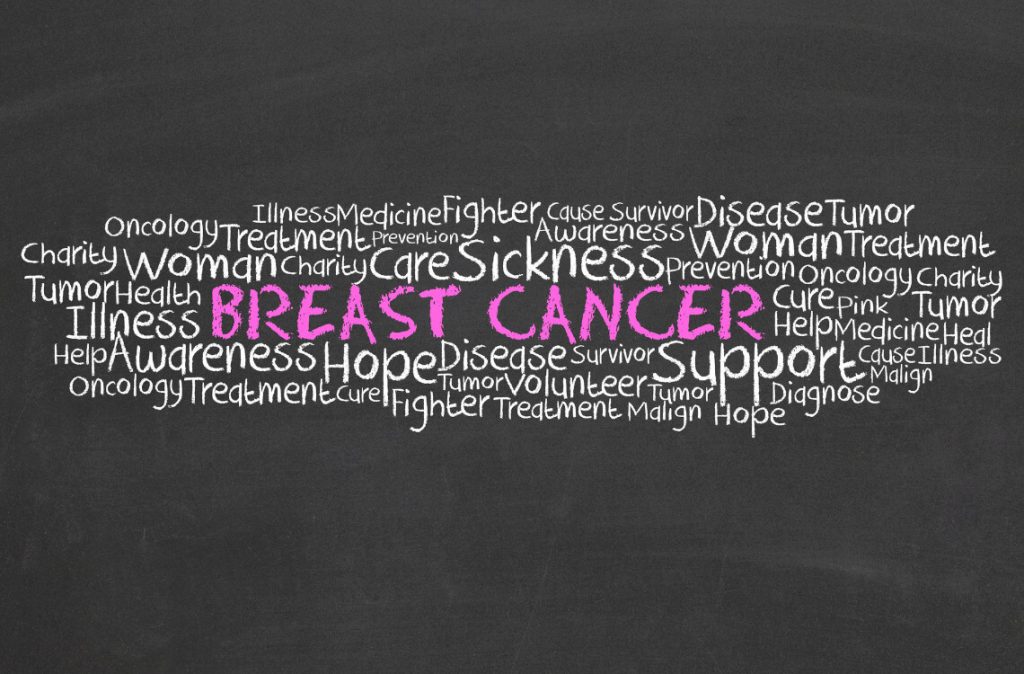Breast cancer is one of the most prevalent malignancies in Malaysia, followed by colorectal cancer, lung cancer, nasopharyngeal cancer, and liver cancer.
According to the Breast Cancer Foundation, one out of every 19 Malaysian women is at risk of developing the cancer, compared to one out of every eight in Europe and the United States.
We should also be aware of the following pertinent statistics regarding breast cancer:
- It affects an estimated 1 million women globally each year and is the second most significant cause of cancer deaths among women worldwide, second to lung cancer.
- Of the 1 million afflicted women, 45% of them live in developing countries.
- In Malaysia, 64% of newly diagnosed cases of female breast cancer in 2003 involved patients who were between the ages of 40 and 60.
- Chinese women appeared to be the most at risk, with 59.7 per 100,000 incidences, followed by Indian women (55.8 per 100,000) and Malay women (33.9 per 100,000).
How Breast Cancer Develops
Breast cancer occurs when milk-producing gland cells known as lobules or ducts grow abnormally and proliferate uncontrollably.
The abnormal cells will subsequently invade the breast tissue around them, and from there they will disperse throughout the lymph nodes, lungs, bones, brain, liver, and other organs.
No one knows for certain what causes breast cancer.
However, some risk factors can dramatically increase our chances of developing breast cancer, such as:
- Being a female
- Has never been pregnant
- Personal history of breast cancer
- Family history of breast cancer
- Obese or overweight
- Radiation exposure
- Sedentary lifestyle
- Postmenopausal hormone therapy
- Drinking alcohol
(Source: Mayo Clinic)
What Are the Warning Signs
Did you know that roughly 40% of newly discovered breast cancer cases in Malaysia each year were already in advanced stages?
It is unfortunate because early discovery can significantly increase the likelihood that a treatment will be effective.
Therefore, we must raise our level of breast awareness if we hope to improve this.
Here are some warning signs and symptoms to watch out for to determine whether you should seek medical attention:
- changes in nipple shape
- breast pain that persists after the following period
- a new lump that persists after the next menstruation
- clear, red, brown, or yellow discharge from one breast
- unexplained breast redness, swelling, skin irritation, itching, or rash
- a bulge or swelling around the collarbone or under the arm
- nipple retraction, also known as inward turning
- enlargement of one breast
- dimpling of the breast area
- an existing lump that grows, different than clogged milk ducts
- skin with an “orange peel” texture
- a lack of appetite
- unintentional weight loss
- swollen lymph nodes in the armpit
- visible veins on the breast
Maintain Breast Health Through Self-Examination
It can be difficult to recognise the warning signals at first, but try to make it a monthly routine to perform a breast exam on yourself.
How to Perform a Breast Self-Check
- In front of a mirror, stand upright with your shoulders and arms by your sides to visually assess your breasts.
- Raise your arm and continue the visual inspection.
- Lie on your back and feel your breasts. To begin, check your left breast with your right hand. Circularly move your fingers with the pads of your fingers to feel for lumps or other changes. Cover the entire breast, from the middle of your chest to your armpit, and from your abdomen to your collarbone.
- Repeat the process by checking your right breast with your left hand.
- Do this again while standing or sitting. It could be easier to do this in the shower.
Even if there are no symptoms, it is still vital to get regular screening for breast cancer because it can be erroneous.
Mammograms can also help detect breast cancer early, giving you a better chance of successful treatment.
The National Cancer Society Malaysia (NCSM) recommends that women over the age of 40 obtain regular mammograms, even if they do not suspect anything is wrong.
Even if you experience one or more symptoms, you might not actually have breast cancer.
You may potentially develop an infection if you experience additional symptoms like nipple discharge.
If you encounter any symptoms, visit a health professional and have a thorough medical examination.
Remember ladies, prevention is always better than cure!
Disclaimer: The information provided in this article is for informational purposes only and should not be considered as medical advice from Motherhood. For any health-related concerns, it is advisable to consult with a qualified healthcare professional or medical practitioner.
For more insightful stories and fun recipes, stay tuned to Motherhood Story!
